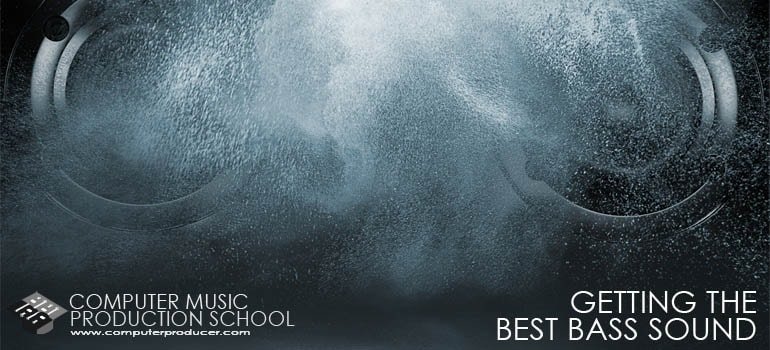This tutorial will help you achieve great bass sound in any situation on any system. The factors that make up great bass is your monitoring system, the mixing room, the bass patch, effects, compression and EQ.
Monitoring: Make sure your speakers are flat – meaning there are no eq curves, additional frequencies added so that what you hear is what you get. This makes sure your translation from system to system is accurate.
The Mixing Room: Because of technology, the room doesn’t matter anymore – and this is why.. If you are using nearfield or loud speakers, listen to mixes at conversation level. The sound will not bounce off the walls and give you an inaccurate misrepresentation. This will also keep your ears fresh for longer periods of time and will yield accurate results faster.
Bass Sounds: Using presets or building your own bass patches doesn’t matter as much as that your bass sound goes ‘WOW’ when you hear it. Either the bass will be a sub bass sound or a punchy sound. How do you tell? Frequency range. Sub bass sounds are in the 30hz to 100hz. Punchy bass can be between 80hz to 120hz. Once you choose which type of bass sound, you can get into the sound design of the patch. Depending on what hardware or software unit you’re using, start with the Attack, Decay, Sustain, Release settings to adjust the tone and depth.
Now add the bass in with your beat then further design it in the pocket of the beat. After you have the general setting, now play with the other knobs of modulation, effects, oscillators, filters, etc. – just play your way into a great sound.
On a side note, its important to choose the opposite type of kick in comparison. An example is if you choose a sub bass then choose a punchy kick sound and vice versa.
Bass Effects: Distortion, chorus, flange, phasers are great effects for bass that help enhance the initial bass patch. Use these sparingly for the final touch of your patch.
Bass Compression: Use compression to make the bass stay strong. Start with a ratio of 10:1, fast attack and slow release. Once again, play your way into a great sound. When doing this you’ll start noticing the settings that work best for your favorite patches.
Bass Eq: After compression, the last thing is EQ. A rule of thumb is never add or boost EQ. Ever. If the sound needs to be boosted, it’s better to choose or design a different patch that fits in the pocket of the beat. As a guideline, EQ is used only to cut the frequencies below 40hz. This gives the beat more headroom and dynamic capabilities. Use a low shelf EQ or hi pass filter.
There are tons of ways to approach the bass in a mix. Keep an eye on the clock during this process. Time management is essential to making great bass sounds and beats. Indecision is still making a decision. Use the outlined approach in this tutorial to enjoy the process of getting great bass the moving on quickly to finishing your beat.
As always, make sure to apply this article to your music production. Set aside some time to work on your sound design technique before or after the creative process. This will give you a chance to train your ears and also get instant results in shaping the best bass sound you are after.

